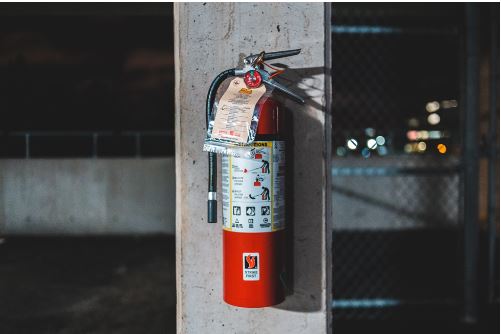
Fire safety holds utmost significance in industrial facilities, and particularly for paper and pulp plants. These plants face substantial fire risks due to the presence of combustible materials and machinery that generates heat. A fire incident within a paper and pulp plant can result in catastrophic consequences, such as extensive property damage, environmental contamination, and potential loss of lives.
Thus, it becomes imperative for paper and pulp plants to adopt effective fire protection measures to mitigate fire hazards and guarantee the safety of workers and the neighboring community. If you have a staff restaurant within your paper plant, it is critically important you understand the kitchen fire extinguisher requirements to ensure your fire extinguishers are up to code. In this post, we will look at a few effective fire protection measures for paper and pulp plants:
1. Fire Prevention Measures
Preventing fires in paper and pulp plants begins with a comprehensive fire prevention plan. Maintaining a clean and organized workplace is crucial for fire prevention. Regularly remove accumulations of wood chips, paper dust, and other debris that can act as fuel for fires. Follow effective waste management practices to reduce accumulation of flammable materials within the plant.
Additionally, make sure you have designated rooms for safe storage of combustible materials, such as chemicals. These storage rooms must be proper ventilation and away from heat-generating machinery. Ensure you also follow proper handling procedures to reduce the risk of spills and leaks that could cause fires, and regularly inspect and maintain equipment to identify and address any potential fire hazards.
2. Fire Suppression Systems
In addition to prevention measures, paper and pulp plants should have effective fire suppression systems in place to mitigate the impact of fires. Consider installing automatic sprinkler systems throughout the plant to significantly reduce the spread of fires. These systems detect heat and automatically release water or other fire-suppressing agents to extinguish or control the fire until emergency responders arrive.
To ensure early detection and timely response to fires, implement reliable fire detection and alarm systems. These systems include smoke detectors, heat detectors, and manual call points. These systems should be interconnected to ensure a prompt alert to all personnel in the facility. Offering thorough training to employees regarding the proper usage of fire extinguishers is paramount.
It is essential to regularly perform inspections, maintenance, and recharge fire extinguishers to ensure they perform optimally. By diligently adhering to these practices, you maximize the effectiveness of fire extinguishers, improving the overall fire safety within your paper plant.
3. Emergency Planning and Training
Alongside implementing fire prevention and suppression measures, make sure you are always prepared for emergencies. Build a comprehensive emergency response plan, which outlines the roles, responsibilities, and procedures to be followed in a fire incident. Your plan should include evacuation routes, assembly points, and communication protocols.
Additionally, consider training your employees on fire safety procedures. This should include evacuation drills, the proper use of fire extinguishers, and emergency response protocols. It is also essential you encourage your team to report potential fire hazards and uphold a culture of safety throughout the facility. Most importantly, establish a working relationship with local fire authorities and conduct joint training exercises. This collaboration ensures a coordinated response in case of emergencies and allows for a better understanding of the specific challenges posed by the paper and pulp plant environment.
Endnote
Understanding the potential fire hazards and implementing fire protection measures outlined above can help significantly reduce the likelihood of fires in your pulp and paper plant. To ensure the effectiveness of these measures, it is essential you perform inspections and maintenance of production machinery and fire suppression systems. Ultimately, a comprehensive fire safety approach and proper employee training will contribute to a safer working environment and the prevention of fire incidents in your paper and pulp plant.
